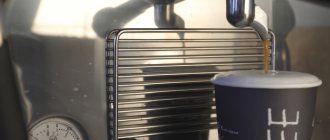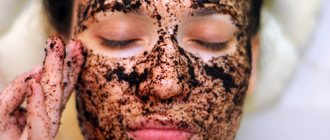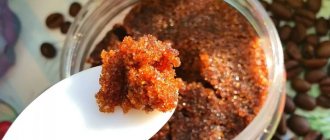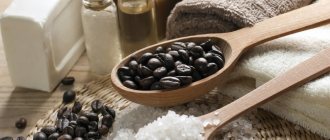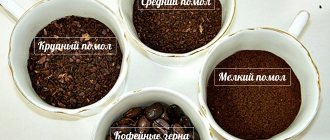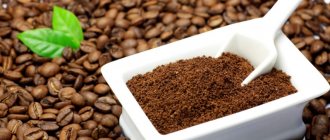One of the things you can do to enjoy your coffee is to roast your own beans. By roasting coffee at home, you can guarantee that every cup of coffee will be fresh. With a little practice, you can learn how to roast coffee to your liking.
While you can buy coffee at your local store, why not roast it yourself? Thanks to this, you can start making delicious coffee completely at home.
To roast coffee at home, you will need a few tools and green coffee beans. It's also important to understand the process from start to finish so you can understand how roasting affects the taste of your coffee.
What is coffee and why roast it?
The fruit of the coffee tree is actually a small red fruit.
Before coffee reaches your cup, it goes through a large number of processing steps. The first stage of coffee processing looks like this: the outer layer, pulp, and inner layer are removed. The inner seeds, also known as coffee beans, are then dried.
Once dried, the resulting green coffee beans are shipped all over the world. Only then are the grains roasted.
Coffee beans are similar to dry pinto beans. This means that the grains can be stored for a very long time. At the same time, they will remain fresh after frying. If the grains were not roasted, the drink would be bitter and sour, making it difficult to drink. Roasting imparts unique flavors and aromas to coffee.
What happens during the coffee roasting process?
During roasting, green coffee beans undergo a significant transformation. Moisture is extracted from the grains, causing them to dry and expand.
During this process, some natural carbohydrates are converted to carbon dioxide, while others are caramelized into flavors. This allows you to form a complex taste profile of coffee. At the end of roasting, the green beans turn brown. They are about 18% lighter, while being 50-100% larger in size.
As soon as the roasting process ends, the beans begin to release gas. Over 1-2 weeks, roasted coffee may lose some of its taste and aroma.
What to Consider When Roasting Green Coffee
At the beginning of the roasting process, the green grain begins to turn slightly yellow, and the odor released resembles that of dry grass. Gradually heating up, the coffee bean begins to smoke slightly, emit a pleasant smell and crackle. At this stage you need to be extremely careful and increase stirring to avoid burning. Actually, at this moment the roasting process itself begins - moisture leaves the grain and its physicochemical properties change, essential oils come to the surface of the grains. The yellow color of the coffee begins to quickly change from slightly brown to very dark. The most important thing at this stage is not to miss the desired degree of roasting.
Don't forget that the most important thing when roasting green coffee is constant and intense, but at the same time gentle stirring of the grain.
This is also interesting:
- How to brew and drink green coffee correctly Green coffee has quickly gained popularity as an excellent means for losing weight. In this regard, the question arises: how to brew and drink green coffee correctly? You can brew it in different [...]
- Green coffee for weight loss Today, green coffee is increasingly being used for weight loss because of its ability to prevent the deposition of fat in the body. Caffeine and chlorogenic acid, which are part of coffee […]
- Green coffee with ginger as a means for weight loss Green coffee with ginger in the form of a drink is an excellent means for losing weight. Its ability to quickly “burn” excess fat has been proven by the latest research by nutritionists. Green coffee itself […]
- Contraindications for drinking green coffee Along with its beneficial properties, green coffee has a number of contraindications that those who decide to consume this product on an ongoing basis need to know. Who should […]
How to roast coffee using a roaster
Currently, you can purchase various roasters that will help you roast coffee. The operating principle of these machines is similar to a device for making popcorn. A fast stream of hot air is used, which not only roasts the beans, but also keeps them moving.
This is one of the simplest methods of roasting coffee, with the roaster doing most of the dirty work.
- Place the required amount of beans into the roaster. You can determine the correct amount according to the instructions for the device.
- Close the roaster and turn it on.
- Let the coffee roast to the color you want. Don't forget: the longer the roasting process, the darker the beans will become and the stronger the flavor will be.
- Pour the coffee beans into a sieve and shake until the beans are warm, not hot.
- Store the resulting coffee beans at room temperature. At the same time, direct sunlight should not penetrate into the place of their storage.
Steps to Roast Coffee at Home
To roast coffee beans at home, you must take three basic steps:
- Step 1: choosing a roasting method (choosing a roaster);
- Step 2: choosing green coffee;
- Step 3: select the roasting process;
So, let's look at each of these steps.
Freshness is a huge issue when you buy coffee at the store. Because the quality of coffee quickly decreases after roasting. After 5 days, the aroma of the coffee weakens, and after 10 days, the overall quality of the cup deteriorates.
And if you roast the coffee yourself, it is always fresh.
Only God knows how old the coffee of famous brands that is sold in supermarkets actually is.
Home roasting also allows you to control the degree of roast and you can customize the quality of the coffee to your liking and choose from a huge selection of green coffees.
Unlike roasted coffee, green coffee is quite stable and the quality of the cup does not deteriorate for 6 months to 1 year from the production date (you will find the production date on the packaging).
Home roasting is also often cheaper than buying pre-roasted coffee, with most green coffees selling for less than $7 per pound.
Roasting at home is fun and easy and takes very little time and effort, but it's a step you should be prepared for and enjoy every time. So start small!
How long does it take to roast coffee? Air roasting ideally takes 8 to 12 minutes, while drum roasting on a home roaster takes 14 to 20 minutes.
roasting coffee in a frying pan
How to Roast Coffee Beans Using a Simple Popcorn Popper
Before modern coffee roasters and popcorn roasters were invented, people roasted beans over a burner. You will need a burner roaster. It is a pot with a lid that can be easily moved.
You will need:
- Burner popcorn maker from Whirley Pop.
- Burner (gas or electric).
- Unroasted coffee beans.
- Laser thermometer (optional).
- Baking tray.
- Sealed container.
Preparation. Preheating
Visit your local coffee shop and buy unroasted, green coffee beans. Feel free to ask for recommendations on how hot to roast your chosen beans. So, don’t be afraid to figure things out on your own, experiment, learn how to roast coffee according to your taste preferences.
Once you've purchased your grains, clear out the picnic table and set up the burner, popcorn popper, and baking sheet. Preheat the Whirley Pop; it should warm up to a temperature of about 200 degrees Celsius. The most convenient way to measure temperature is with a laser (infrared) thermometer. It should take about 5-10 minutes to warm up to the desired temperature.
Place coffee beans into the device
Once the popcorn maker has reached the desired temperature, pour in the unpopped kernels. Start turning the handle. It is necessary that the grains do not stop moving throughout the entire procedure, because this way they will roast more evenly. Therefore, the whole process needs to be cranked at a measured pace. Don’t forget: this is a business in which you need to put your whole soul.
Meanwhile, the beans will go through various stages of roasting. You will watch natural, unroasted coffee seeds transform into beautiful, aromatic, and full-flavored beans of your own making. Be careful, because it only takes a few minutes from perfectly roasted coffee beans to perfectly ruined ones.
Roast the coffee beans
During roasting, coffee beans go through several stages. You'll see them go from raw to something you can grind and make coffee from. Only you can decide what degree of doneness you are interested in. It is important to be attentive to the process in order to learn to control the taste of the future drink, master the procedure to perfection and, most importantly, not let the grains burn.
There are 10 stages in total. Try to determine each of them during the roasting process, without taking into account the last degree. It should be avoided, because it means that the grains have been overcooked.
Remove the grains and cool them
Once you have reached the roast level you are interested in, pour the coffee beans onto a baking sheet. Shake it. Let the grains cool under the influence of a natural breeze, and the delicious smells entering the neighbor's yard will make others jealous. Depending on how deep the roast was, you'll soon need to put the beans away in a storage area.
Place the grains in a storage container
Once the beans have cooled, they should be placed in a quality, airtight container. The best option is glass jars with screw caps, as they create an almost completely airtight environment. If your roast is a full New York roast or even darker, we recommend chilling the beans for 12 hours. This will allow the oils to release before packaging the product.
All that remains is to grind the beans, brew the coffee and enjoy the drink. In just 20 minutes, which the whole process takes, you will have delicious home-roasted coffee.
Wabash Valley Farms - Burner Popcorn Popper - Whirly Pop with Popcorn Popper Kit
Approximate cost: $26.99
Subtleties and nuances
When roasting coffee, focus on sounds. It crackles because water is released and evaporated. At this moment the roasting begins.
Gradually the temperature increases, the grains dry out, and the sound becomes more intense.
The duration of the procedure affects the color of the grains. In 6-7 minutes they turn light brown. In 8-9 minutes they acquire a dark color.
The saturation of the drink depends on the color of the grains. Light ones have a mild taste, while dark ones have a bitter taste.
After 5-6 minutes of roasting, essential oils begin to release. They have a rich, persistent scent.
Interesting! Coffee latte - composition and recipes for making it at home, history of origin
How to Roast Coffee Beans in a Popcorn Maker That Uses Hot Air
A popcorn popper is an easy way to roast coffee. This method is recommended for all beginners who want to roast their own beans to try.
The whole process only takes a few minutes, but you can experiment with the degree of roasting. You can make it both light and dark. You can even create something in between. When starting to practice coffee making, you can't underestimate roasting your own beans in a machine that has only been half-used for years.
You will need:
- A popcorn maker that uses hot air.
- A bowl.
- Unroasted coffee beans.
- Thermometer (optional).
- Baking tray.
- Sealed container.
Preparation. Preheating
To get started, collect everything on the list above. Contact your local coffee retailer to purchase raw, unroasted green beans. You can buy different types. Ask how deep frying is required in each case.
At home, you should make room on the kitchen table. You need to place a popcorn maker, a bowl (for the husks) and a baking sheet in which the grains will later cool. Turn on the popcorn. It should take about 30 seconds for the device to preheat.
Pour in coffee beans
Once the popcorn maker has warmed up, you can pour half a mug of coffee beans into the container. It will take about 5 minutes to completely fry. You need to keep an eye on how the beans go through the different stages of roasting. Never leave the popcorn maker unattended.
Roast the coffee beans
During roasting, the beans go through several levels. You'll see them go from raw to ready for grinding and brewing coffee. You can decide for yourself what degree of roasting you want to achieve. It is important to be attentive to the process in order to learn to control the taste of the future drink, master the procedure to perfection and, most importantly, not let the grains burn.
Remove the grains and cool them
When you reach your desired roast level, turn off the popcorn maker and pour the coffee beans onto a baking sheet. This will allow them to cool down quickly. To speed up this process, you can lightly shake the pan. Allow the beans to cool completely before transferring them to a storage container.
How to roast coffee at home
Kava Pro
Jul 20, 2017·3 min read
How to properly roast coffee at home - a step-by-step guide. Read more in the article
Freshly roasted coffee, spreading its luxurious aroma around, always delights with impeccable taste and brings great pleasure with every cup. Surely many coffee connoisseurs have thought about how the roasting process occurs and dreamed of roasting coffee beans themselves right at home. For you, we have collected several fairly effective ways to roast coffee at home and get the most pleasant emotions from the process.
Before moving directly to practice, we advise you to adopt some theoretical points that will save you from annoying mistakes and allow you to achieve the most correct roasting:
- Before frying, be sure to open the window or turn on the hood. The process is accompanied by a large amount of smoke.
- There are different degrees of roasting of grain. So, with a light roast (the beans become light or light brown), you are unlikely to achieve the desired “coffee” taste. The usual taste is obtained with medium and dark roasting. The advantage of roasting yourself is that you can experiment to your heart's content, choosing the ideal degree of roasting of the beans to suit your taste.
- Each type of grain requires special conditions under which their true taste and aroma are fully revealed. Professionals know exactly how to approach this or that variety, what combinations will be the most successful.
- The real roasting begins after the “first crack,” when the oils come out and the sugars in the bean caramelize.
- When roasting at home, you need to constantly stir the grains. This is a rather lengthy and responsible process, and if you take a break, you can forget about delicious coffee.
- After roasting, the grains need to be cooled by first pouring them onto a flat surface in an even layer. A regular fan will also work for cooling. It is not recommended to leave the beans to heat in a frying pan or in the oven after turning off the heat, since there is still a risk of overcooking the coffee and not getting the result you expected.
- During the home roasting process, the husk remains. When using professional equipment, it is blown out. The husk does not affect the taste of the drink. To get rid of it, just pour the grains into a colander.
And, most importantly, at least 6-12 hours must pass before grinding the coffee beans and preparing the drink. Many who have roasted beans at home have complained about the unsatisfactory taste of the drink, which is most often due to the fact that the beans were cooked immediately after they were roasted.
The most obvious answer to the question “how to properly roast coffee at home?” - do this using a frying pan. The home roasting scheme is quite simple:
- Take a large frying pan. Preferably cast iron or steel. Wash thoroughly so that there is not even a hint of foreign odors left on it that could spoil the aroma of the beans.
- Sprinkle the grain in an even layer. The volume of grains in relation to the depth of the pan should be no more than ¼, since they increase in size during the process. In addition, this will make it easier for you to stir the grains so that they do not fall out of the dishes.
- The roasting itself will take about 20 minutes. You need to start with a low temperature and gradually increase it.
- Stir the grains constantly. Wait for the “first crack” and optimal color. Don't overcook!
- When drops of oil appear on the surface of the grain, immediately turn off the heat and begin cooling.
Next, all you have to do is cool the grain, pack it in an airtight package and wait until it “arrives.” It is advisable to use freshly roasted grains within a week, then they gradually lose their taste. Once you get the hang of roasting yourself, you can try interesting options for preparing the drink using special accessories from the range of a professional barista.
A good and not complicated method of roasting grains in the oven can be divided into several main stages:
- Preheat the oven to 230 degrees.
- Place the grains on a baking sheet or fine mesh.
- After heating the oven, place a baking sheet and gradually reduce the temperature.
- Roast the grains for 15–20 minutes. Always make sure they don't burn.
- Drain them in a colander and shake thoroughly over the sink to remove the husks. It is advisable to immediately cool them with a fan or hairdryer, setting it to cold blowing mode.
“Experienced” roasters still advise using a frying pan, since there is no way to stir the beans in the oven.
So, we looked at how to roast green coffee at home without much effort. Don’t be discouraged if you don’t get a good roast the first time (or the second and third time). This business requires a lot of experience, which comes with practice. It may take you more than one kilogram of green beans before you can get the perfect roast, revealing all the taste qualities of this noble drink.
When roasting at home, be sure to follow the basic rules.
If you don’t want to experiment with roasting, Coffee Roy’s regularly roasts its beans using professional equipment. You can take original tasting kits for testing, choosing the best varieties according to your taste.


